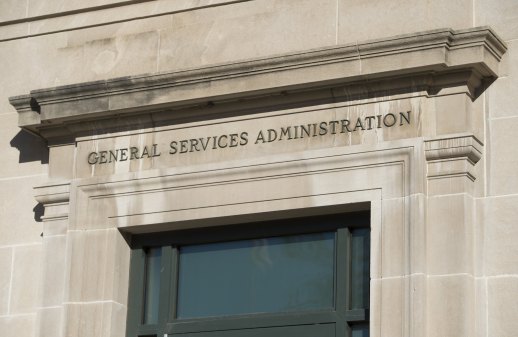Since the first White House Energy Datapalooza in October 2012, Boston’s FirstFuel Software — a privately owned company — has used open data to analyze the energy efficiency of more than 1 billion square feet of building space and save 2.6 billion kilowatt-hours of energy, or what it takes to power 227,325 homes, said CEO Swap Shah. Just from deploying its software in the Reagan Building, where the 2014 Energy Datapalooza was held Wednesday, Shah said FirstFuel has saved the General Services Administration $5 million in energy costs.
FirstFuel was just one of the dozens of public and private organizations, like Nest Labs, Opower and C3 Energy, at the Datapalooza explaining the innovative ways they use open data from energy agencies to tackle the biggest issues in energy use and climate control.
But the biggest announcement of the day came from GSA, which introduced its commitment to the Green Button pilot, a new platform to reduce energy costs throughout federal buildings. Green Button also offers consumers the ability to manage their own energy usage and businesses the data around which they can build energy-efficiency tools. Already, 48 private sector utility and energy service companies have committed to leveraging Green Button technology, affecting the energy management of more than 42 million households and businesses.
President Obama in December issued a Presidential Memorandum calling on GSA to leverage the tool in its governmentwide management of buildings.
And with a massive building portfolio as the “landlord of the federal government,” GSA Administrator Dan Tangherlini said his administration plays a crucial role in energy sustainability.
“The General Services Administration is more than the people who brought you this auditorium,” he said. “The world in which we’re operating has changed dramatically. This is the tip of the technological iceberg,” Tangherlini said, referring to the ability of consumers to access information about a building from their smartphones or other mobile devices.
The new Green Button pilot is built upon energy management activities GSA started in 2012. Analysis of 100 GSA buildings has uncovered $16 million in total energy savings since. Tangherlini, like Shah earlier, pointed out savings right above the heads of the audience in the Reagan Building, which came from eliminating unnecessary “rogue fans” that wasted $800,000.
GSA teamed up with with the Energy Department, the Environmental Protection Agency and the National Institute of Standards and Technology to work with Schneider Electric, Pepco Holdings and FirstFuel to launch the Green Button platform across its portfolio of federally-owned buildings to drive efficiency and savings.
“By going green, we save green,” Tangherlini said.
Of course, it’s not all about the money. John Holdren, director of the Office of Science and Technology Policy and adviser to the president, and Energy Department Secretary Ernest Moniz both spoke of the importance of data-driven energy efficiency, but also its correlation to the underlying issue of climate change.
Moniz called climate change — among the Obama administration’s highest priorities during the president’s second term in office — “the central problem of our time.”
“The bottom line… is that climate change can no longer be identified as a distant threat,” Holdren said.
Moniz characterized technology, innovation and data as “an extremely critical national resource,” and said the examples of public-private partnerships presented at the Datapalooza are key to achieving the United States’ energy objectives by using innovation.
“We’re going to need all hands on deck,” Moniz said. “All that we can do in driving renewable energy, efficiency and grid investments is critical.”




